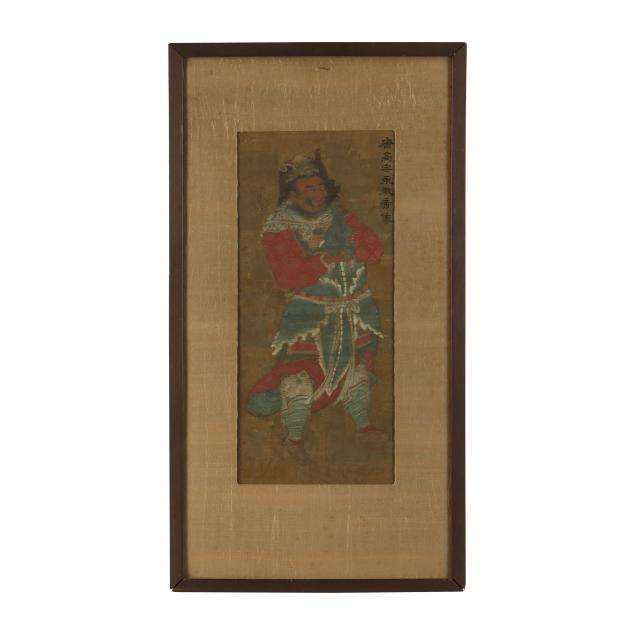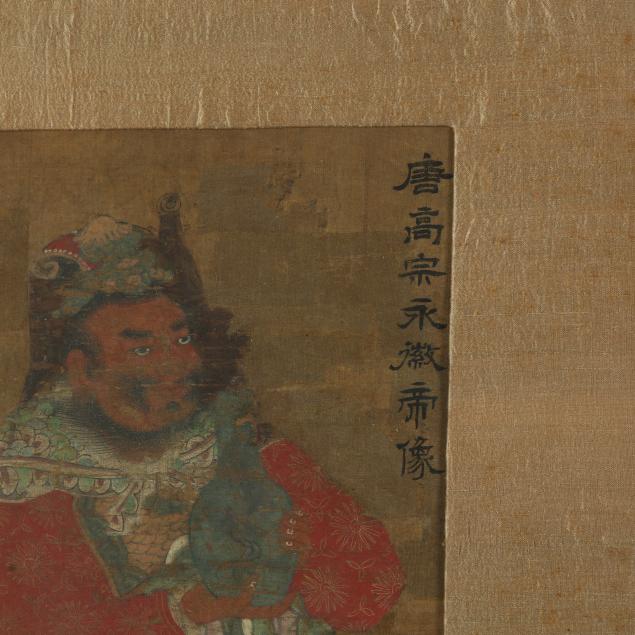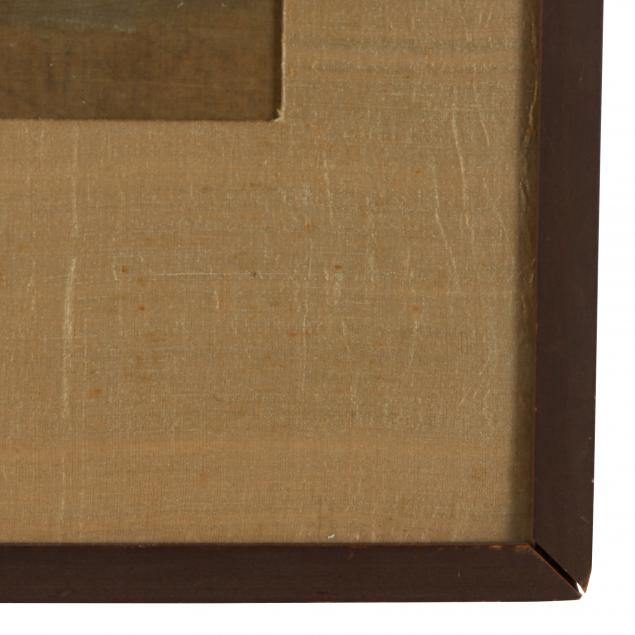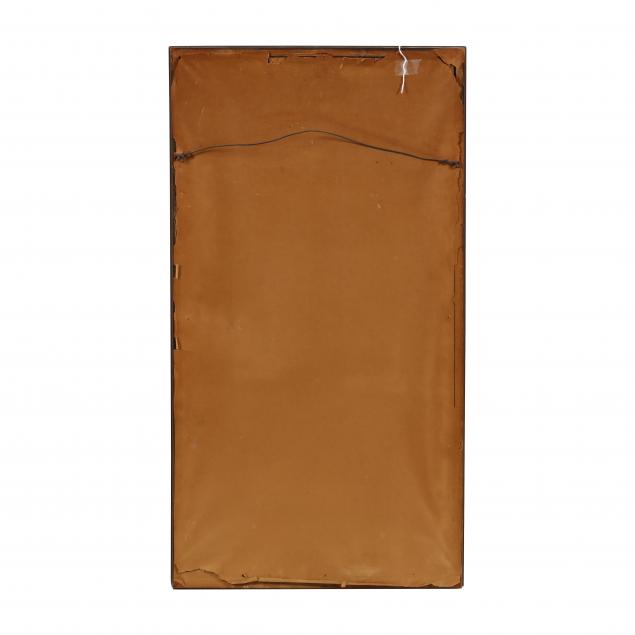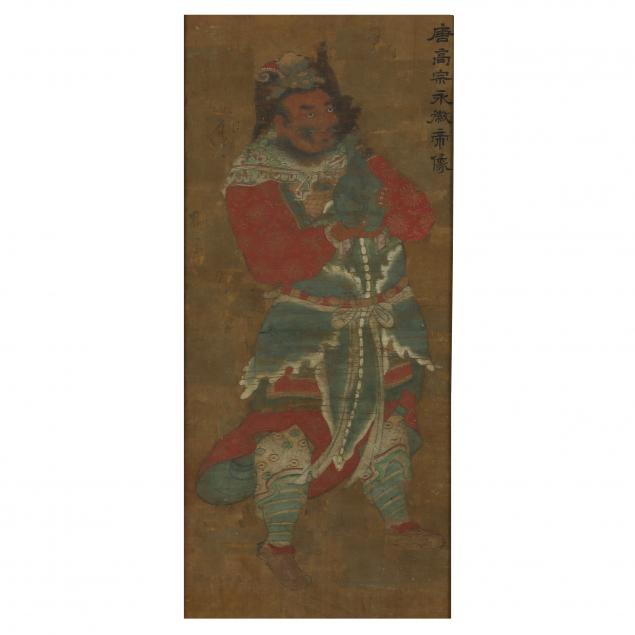
Lot 1128
A Chinese Painting of Tang Dynasty Emperor Gaozong
Lot Details & Additional Photographs
Frame dimensions 28 1/2 x 15 1/4 in., Sight size 18 x 8 in.
From the Collection of the late Dr. Margery Williams Adams and Dr. George Carlisle Adams, Charlotte, North Carolina Margery and Carlisle Adams were lifelong patrons of the arts in their hometown of Charlotte, North Carolina. They met in Paris where they were both Fulbright Scholars, she studying at the Sorbonne, and he teaching Pediatrics to French physicians.
Margery (1921-2022) grew up in Worcester, MA. She graduated from Smith College, held a Masters and a Ph.D. in Art History from Radcliffe College (now Harvard University), and taught Art History at Radcliffe and Queens College in Charlotte. She inherited from her uncle - Frank Smith, a Worcester attorney - an extraordinary art collection of Italian antiques and works by early 20th century contemporary artists, the core of which has been donated to the Worcester Art Museum and Smith College Museum of Art. Her personal interest in collecting focused on New England furniture and 18th century coin silver spoons. She was instrumental in securing the Delhom Ceramics Collection for the Mint Museum of Art in Charlotte.
Carlisle Adams (1923-1996) graduated from Harvard University and Harvard Medical School and began collecting early American furniture and paintings during his freshman year of college to furnish a spartan dorm room. His eclectic tastes encompassed French fans and paintings, Italian furniture, and Persian rugs, his vast collection now residing at San Diego State University. He was a lifelong opera enthusiast, and he served on the boards of both the Charlotte Opera and the Charlotte Symphony.
Painting appears to have writing below the silk; perhaps covered by additional silk; darker areas to the silk in some places, possibly repairs or later painting; overall toning to silk; some loss to pigments; not examined outside of the frame.
